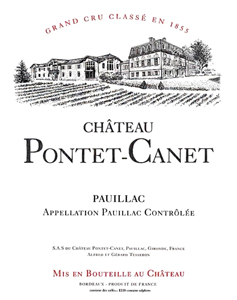| Region | |
|---|---|
| Subregion | France > Bordeaux > Left Bank > Pauillac |
| Colour | Red |
| Type | Still |

Mid to pale crimson with a little age at the rim. Dried herbs and grasses on the nose. Then sweetness. Then some quite brutal tannins. This needs quite a time. Drink 2015-2030.
I was shocked by how backward the 1996 Pontet-Canet was on the three occasions I tasted it in January. This wine possesses superb potential, but it appears a decade's worth of patience will be necessary. The color is a saturated dark purple. With coaxing, the wine offers aromas of black currant jam intertwined with minerals, sweet oak, and spice. A full-bodied wine, it possesses layered, concentrated, sweet fruit, with an elevated level of ripe tannin. Anticipated maturity: 2010-2035.
A classic Pauillac, the 1996 continues to flesh out, revealing an opaque purple color, and a magnificent crème de cassis nose reminiscent of the superb vintages of Mouton Rothschild (Pontet Canet's neighbor). The wine is full-bodied, as well as extraordinarily rich, ripe, and powerful, with layers of sweet black fruits intertwined with earth, minerals, and spicy oak. Massive on the palate, with lofty tannin, but equally high extract, this is a profound Pontet-Canet that may turn out to be even more classic and longer-lived than the 1995 and 1994. Terrific stuff !
There is stark contrast between the nose on the 1996 and post-millennial vintages. This is a much more old-school Pauillac nose, less brightness of fruit, more secondary aromas such as pencil box, autumn leaves, sous-bois and a hint of sandalwood. The palate is medium-bodied, the tannins a little brusque compared to the 2000, but fresh and lively. Certainly very masculine with moderate length. A little dry towards the finish. Drinking perfectly now, although lacking the same level of breeding compared to other vintages. Drink now-2015. Tasted May 2009.